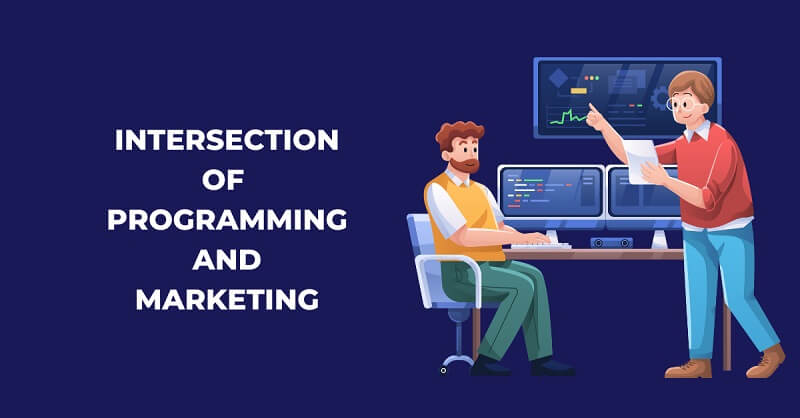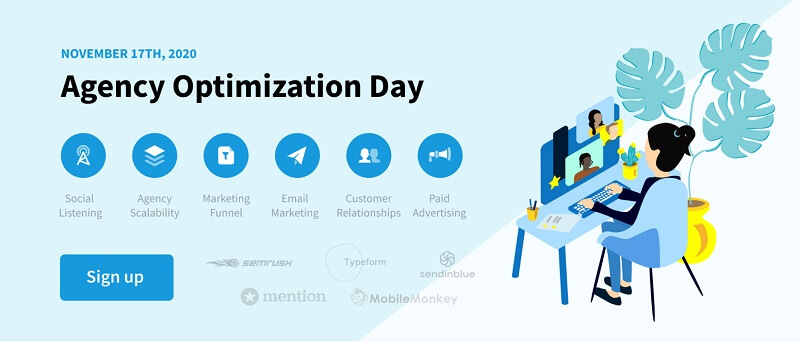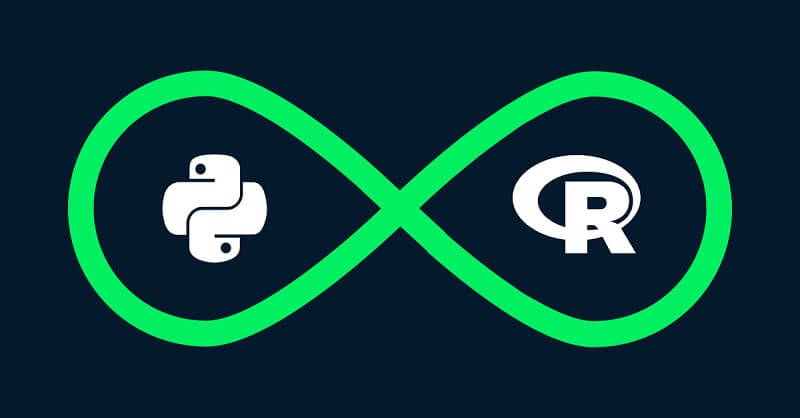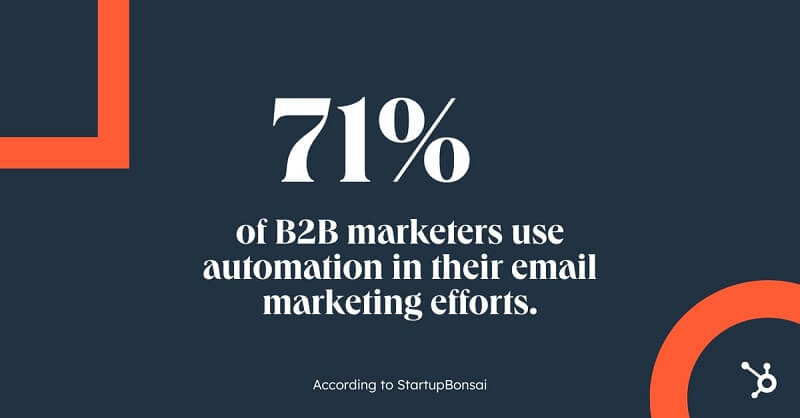
Unleashing the Synergy: Exploring the Intersection of Programming and Marketing in Driving Success
in MarketingAs the business world evolves, so does the need for companies to adapt to survive and grow. As these two industries have a strong synergy when combined, the intersection of programming and marketing has grown significantly in promoting business growth.
The world of programming is constantly developing and advancing, and when utilized correctly, it can help businesses reach new heights.
Marketing, on the other hand, is the art of promoting products or services to customers. When paired with programming, it can create targeted campaigns that reach the right people at the right time. We will explore the intersection of programming and marketing and how their joint efforts have become a driving force in business growth.
What is programming and marketing?
Marketing and programming may seem like two completely unrelated fields, but in today’s digital age, they are more interconnected than ever before. Programming plays a significant role in the marketing industry by enabling businesses to create customized software solutions to automate various marketing processes.
Programming involves designing, coding, and debugging computer programs that carry out specific tasks to accomplish a goal. In marketing, these tasks can range from developing custom email marketing campaigns to creating personalized landing pages.
By programming these tasks, businesses can optimize their marketing efforts to target specific audiences and increase their conversion rates.
Moreover, programming also offers businesses the ability to analyze and measure the effectiveness of their marketing campaigns.
This means that they can track and adjust their strategies in real time to ensure maximum ROI (Return on Investment). Therefore, the combination of programming and marketing plays a fundamental role in creating a successful digital marketing strategy in today’s ever-changing digital landscape.
All in all, marketing and programming are two essential components that help businesses succeed in today’s digital age. While programming concerns coding and developing software, marketing is responsible for creating and executing effective strategies to promote products and services to potential customers.
With the increasing use of technology in the business world, it is becoming increasingly important for companies to invest in both programming and marketing to maximize their success.
Effective Marketing
Effective marketing campaigns rely on analyzing customer data, which can be facilitated by programming techniques such as data mining and machine learning.
By combining these two fields, businesses can create customized and effective solutions that address their customers’ individual needs and preferences in real-time. Ultimately, the integration of programming and marketing will continue to drive innovation and growth across various industries, paving the way for a more successful future.

How programming and marketing support each other
In today’s data-driven world, businesses must rely on more than traditional marketing strategies to remain competitive.
To truly maximize their potential, businesses must embrace programming as an essential component of their marketing plan. By harnessing the power of data analytics and programming, businesses can gain deep insights into consumer behaviour and preferences. With these insights, they can create highly targeted marketing campaigns that are tailored to the needs of their target audience.
At the heart of this strategy lies the ability to leverage consumer data to develop personalized marketing messages that resonate with individual customers. This requires a deep understanding of programming languages and tools used in data analysis, such as Python and R. With these tools, businesses can analyze vast quantities of data and extract valuable insights that inform their marketing decisions.
Moreover, programming enables businesses to automate repetitive marketing tasks, freeing up time for marketers to focus on more strategic initiatives. By automating tasks such as email marketing campaigns and social media posts, businesses can save time and resources while still maintaining a high level of engagement with their target audience.
In conclusion
In conclusion, the intersection of programming and marketing is becoming increasingly important for businesses looking to succeed in today’s data-driven marketplace. By embracing programming as an essential component of their marketing strategy, businesses can gain valuable insights into consumer behaviours, develop personalized marketing messages, and automate repetitive tasks.
Ultimately, businesses that successfully integrate programming into their marketing plan will be better positioned to maximize their potential and drive sales over the long term.
Programming and marketing are two key components of any successful business strategy. Programming provides the technical backbone for executing a marketing plan, enabling businesses to automate and optimize various tasks such as email campaigns, social media scheduling, and customer segmentation.
On the other hand, marketing provides the content and direction for that plan, defining the overarching goals, messaging, and target audience. By combining these two elements, businesses can create a well-rounded and effective marketing strategy that delivers exceptional customer experiences and drives long-term loyalty.
A successful marketing and programming strategy requires a deep understanding of customer behaviour, preferences, and pain points, as well as a solid technical foundation that supports personalization, automation, and analytics.
Together, these elements can help businesses achieve their marketing goals and drive sustained success in an increasingly competitive landscape.
Moreover, the seamless integration of programming and marketing can help businesses gain a better understanding of their customers.
Data collected through programming can provide deeper insights into consumer behaviour, preferences, and purchasing patterns. This information can then be used to develop targeted marketing strategies that effectively influence customer behaviour and improve sales conversions.
Therefore, it is clear that the future of marketing lies in the hands of those who can best combine their programming and marketing skills to create data-driven campaigns that deliver results.

The benefits of leveraging the intersection of programming and marketing
The intersection of programming and marketing holds immense importance for both programmers and marketers. In today’s digital world, marketing has become more technical with the rise of digital platforms and marketing tools.
Hence, programmers can learn valuable marketing skills to stay competitive in their jobs. Understanding how marketing campaigns work can help programmers create effective software solutions that best align with the needs of the clients and target audiences.
On the other hand, marketers can take advantage of programming skills to develop successful campaigns. They can create data-driven strategies by analyzing user behaviour, tracking user data, and personalizing content using segmentation.
Understanding the role of programming in marketing can help marketers make better decisions that lead to an impactful campaign. Therefore, programmers and marketers can leverage each other’s knowledge to create innovative solutions and achieve greater success for their respective organizations.
Again, it is important to emphasize that marketing and programming go hand-in-hand in today’s digital world. A strong understanding of marketing principles is no longer enough without also having basic programming knowledge.
As the digital landscape continues to evolve, marketers who possess programming skills will have a competitive advantage in terms of optimizing their campaigns and understanding the technical aspects of their work.
By combining marketing and programming expertise, professionals in this field will be able to better identify areas for improvement, enhance audience engagement, and ultimately drive business success. Those who can effectively navigate both the creative and technical aspects of this dynamic field will shape the future of marketing.
Adopting a synergistic mindset for maximum business growth
Maximizing business growth is a challenge that companies constantly face. To achieve this goal, adopting a synergistic mindset that encourages collaboration between the marketing and programming departments is paramount.
While the marketing team focuses on creating brand awareness and driving customer engagement, the programming team develops software and technological solutions that enable efficient business operations.
By recognizing the importance of both departments in the overall success of the business, companies can foster an environment of cooperation and mutual learning. The programming department can provide the marketing team with insights into emerging technologies and trends, while the marketing team can offer valuable feedback on customer behaviour and preferences.
Such collaboration leads to the development of more effective strategies that cater to the needs of both the business and its customers. In today’s rapidly evolving business landscape, adapting to change requires a proactive approach that embraces the diverse perspectives of different departments.
In essence, marketing and programming are two sides of the same coin, with each department serving a unique but equally essential purpose. By working together, businesses can harness the full potential of their resources and drive sustainable growth.
Power of marketing and programming
Thus, combining the power of marketing and programming can lead to a harmonious relationship in the business world.
Marketing’s creative strategies and programming’s technical framework can combine to form innovative solutions. Using data, both aspects can analyze customer behaviour and provide insights on how to improve engagement with the brand.
By utilizing the strengths of each field, businesses can ultimately improve their overall success. As technology continues to advance, it is imperative that marketing and programming continue to collaborate and innovate in order to stay ahead of the game.
Together, they can create the next best thing in customer engagement and propel businesses forward.

Strategic tools for exploring the intersection of programming and marketing
In today’s digitally-driven world, the relationship between programming and marketing has become more intertwined than ever before. With the increasing prevalence of technology in marketing operations, businesses must now explore the connection between the two disciplines to achieve success.
Programming allows marketers to develop algorithms and automate data collection, empowering them to gain valuable insights into consumer behaviour. Furthermore, programming enables marketers to create more targeted ad campaigns that can reach larger audiences with greater efficiency.
Conversely, marketing professionals can provide programmers with unique insights to help improve the user experience and increase customer engagement. By combining these two disciplines, businesses can achieve greater success in their marketing efforts, ultimately leading to increased revenue and brand recognition.
As such, understanding the relationship between programming and marketing has become an essential element of any successful marketing strategy in the modern era.
Moreover, customer segmentation and data analysis have revolutionized the way marketing and programming intersect. These strategic tools have enabled marketers to identify patterns in consumer behaviour and preferences, allowing for the creation of more targeted and personalized campaigns.
By leveraging data, marketers can develop a deeper understanding of their target audience, their needs, and their pain points. This allows them to design campaigns that resonate with consumers on multiple levels. In turn, this translates into improved ROI and, ultimately, business success.
As marketing continues to evolve and become more integrated with technology and programming, tools such as data analysis and customer segmentation will become even more essential for businesses looking to stay competitive in today’s rapidly changing market landscape.
Creating sustainable growth through leveraging the intersection of programming and marketing
Marketing and programming are two critical components that can be used together to achieve enormous success.
The integration of these tools can provide a major advantage to businesses seeking sustainable growth. When used in combination, marketing and programming can help companies create innovative products, execute targeted campaigns, and improve their online presence.
The intersection of marketing and programming allows businesses better to understand the needs and preferences of their target audience. By leveraging data analytics and machine learning, companies can gain insights into consumer behaviour, which can then be used to inform marketing strategies.
This insight could mean that businesses focus on creating SEO content that can be used as part of a broader marketing strategy or invest in social media ads designed with specific customer personas in mind.
Programming also plays a critical role in developing successful digital marketing campaigns.
From automated email workflows to creating personalized landing pages, programming helps businesses to execute campaigns at scale more effectively.
By leveraging advanced programming tools like web-based hooks and APIs, marketers can streamline their marketing automation efforts and ensure that they are delivering tailored content to the right customers at the right time.
In today’s digital age, marketing and programming are essential if businesses are to achieve sustainable growth. Companies that invest in these tools and embrace their intersection will be well-positioned to succeed in the long term.
Whether that success means increased revenue, deeper customer engagement, or greater brand awareness, the combination of marketing and programming has the potential to impact a company’s bottom line significantly.
Additionally, the integration of data into marketing and programming has allowed for even more effective strategies.
Data Analysis: Intersection of Programming and Marketing
Data analysis tools can provide insights into consumer behaviour and preferences, allowing businesses to tailor their marketing campaigns to specific target audiences. Furthermore, the use of data tracking and analytics can provide meaningful metrics that allow businesses to measure the success of their marketing efforts and adjust accordingly.
By combining the power of digital marketing automation tools with data analysis and programming, businesses can create a comprehensive strategy that not only engages their target audience but also provides valuable data-driven insights for future improvements. Overall, the intersection of marketing and programming provides endless possibilities for businesses looking to increase their brand visibility and ultimately drive success.

Conclusion: Intersection of Programming and Marketing
In conclusion, the intersection of programming and marketing is a powerful tool for driving business growth. The combination of these two fields creates a synergy that can propel businesses to new heights.
As programming continues to advance, it opens up new opportunities for targeted marketing campaigns that reach the right people at the right time. By embracing this synergy, businesses can gain a competitive edge and achieve greater success.
As we continue to explore the intersection of programming and marketing, it will be exciting to see what innovations emerge and how they will shape the future of business growth.

